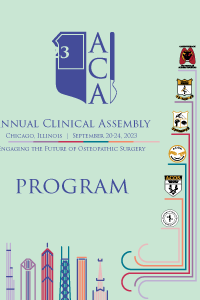ACOS 2023 Annual Clinical Assembly
Cardiothoracic Surgery
General Vascular Surgery
Anatomical Variation of the Suprascapular Artery Origin: A Cadaveric Study
- LH
Lila A. Huston, OMS-II
Medical Student
University of the Incarnate Word School of Osteopathic MedicineDisclosure(s): No financial relationships to disclose
Member Speaker(s)
Learning Objectives:
- Visualize possible anatomical variations.
- Compare a case of anatomical variation to normal anatomy.
- Acquire new appreciation of anatomical variations and their clinical impacts.
Methods or Case Description: The neck of a 75-year-old Caucasian male donor body was dissected bilaterally to demonstrate the musculature and neurovasculature.
Outcomes:
There were two anatomical variations observed on the right side of the donor body - (i) Suprascapular artery (SSA), the blood supply to the rotator cuff muscles, did not arise from the thyrocervical trunk (a branch off the subclavian artery (SA)). Instead, it arose from the axillary artery (determined by its origin past the lateral border of the first rib). SSA then passed between the middle and inferior trunks of the brachial plexus before coursing posteriorly, where it divided further into two branches. While one branch continued to the supraspinous fossa, the second branch split into three smaller branches to supply the subscapularis muscle. (ii) Dorsal scapular artery (DSA) emerged normally from the third part of the SA. However, in addition to its normal blood supply to the rhomboid and levator scapulae muscles, DSA also provided branches to the supraspinatus muscle.
Conclusion: Understanding of potential anatomical variations of the branches of the subclavian artery is crucial for clinicians and surgeons, given the physiologic importance of this vasculature. Awareness and prior identification of variations such as those presented in this case report can help avoid potential complications in surgical procedures.

